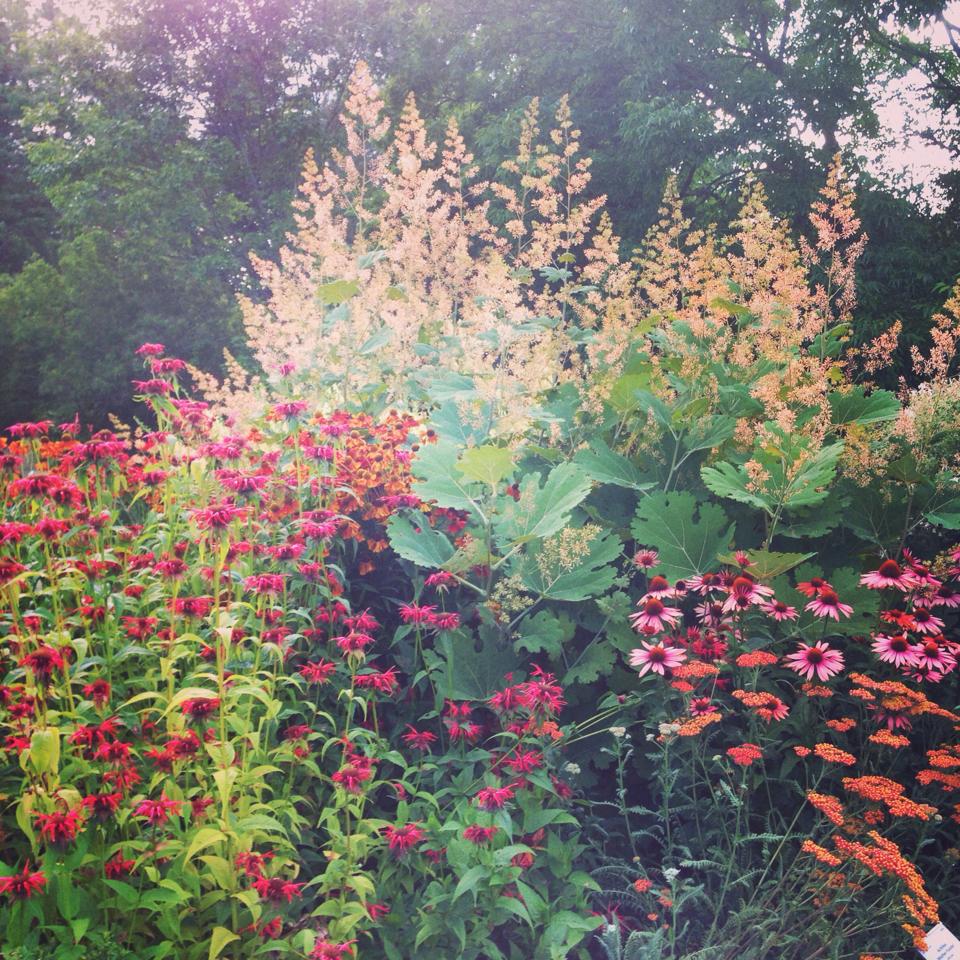Plant Pillars
English
DOI:
https://doi.org/10.7577/formakademisk.5436Emneord (Nøkkelord):
plant materials, aesthetic values, garden design, research methods, plant catalogueSammendrag
ABSTRACT
To sustain the idea of the design of a garden it is essential to look at the plant materials that they are constructed with. We as gardeners, do not use solid materials as our building blocks, we rely on malleable plant materials to build our design. The materials vary over the season, which makes them complex to define.
The impressions of a garden is experienced through the expressions of its aesthetics, and without solid documentation of the form, structure, colour schemes and more, it is difficult to form an understanding of the garden as a whole.
The essence of a design lies in the plant materials that the gardener crafts and arranges in a specific way to create an aesthetic expression. In my work I have developed a method for the craftsman (or –woman) where the intangible plant materials and the subtle/distinct effects of colour and form and their aesthetic values can be measured utilising the system of a plant catalogue.
How will we understand what makes a good and sustainable design if we don’t find methods to document and assess the aesthetics and the craftsmanship behind it?
Referanser
Brookes, J. (1987). Gardens of paradise: The history and design of the great Islamic gardens. New Amsterdam.
Dunnett, N., & Hitchmough, J. (Eds.) (2004). The dynamic landscape: Design, ecology and management of naturalistic urban planting. Spon Press. https://doi.org/10.4324/9780203402870
Edwards, B. (2004). Color: A course in mastering the art of mixing colors. Jeremy P. Tarcher/Penguin.
Estvad Petersen, S. (1991). Paradiset: den islamiske have. Borgen.
International Council on Monuments and Sites (ICOMOS) (1981). The Florence Charter: Historic Gardens. ICOMOS. https://www.icomos.org/images/DOCUMENTS/Charters/gardens_e.pdf
Itten, J. (1988). The elements of color: A treatise on the color system of Johannes Itten based on his Book, The Art of Color. Chapman and Hall.
Hansen, R., & Stahl, F. (1993). Perennials and their garden habitats (4. ed.). Cambridge Univ. Press.
Hobhouse, P. (1991). Flower gardens. Lincoln.
Hobhouse, P. (2004). Trädgårdskonstens historia 3000 år [The history of garden art 3000 years]. Natur och kultur.
Hobhouse, P., Hunningher, E., & Harper, J. (2006). Gardens of Persia (New ed.). Cassell Illustrated. (Original work published 2003)
Jekyll, G. (1995). Colour schemes for the flower garden (New ed.). Frances Lincoln.
Jones, O. (1982). The grammar of ornament: Illustrated by examples from various styles of ornament. Van Nostrand Reinhold.
Khansari, M., Moghtader, M. Reza & Yavari, M. (2004). The Persian Garden: Echoes of Paradise. Mage Publishers
Manzoor, S. (1993). Pardis gardens in Iran. Chalmers University of Technology.
Nilsson, N. (2013). Färgbilden som redskap vid växtkomposition [The color image as a tool in plant composition]. Göteborgs universitet.
Royal Horticultural Society (1999). The Royal Horticultural Society new encyclopedia of plants and flowers (3rd [rev. and expanded] ed.). Dorling Kindersley.
Rusten Åmot, B., & Ophus, B. (2014). Z SPOR – #mønster #dekor [Z TRACK – #pattern #decor]. Norges Husflidslag.
Sørensen, C. T. (1959). Europas havekunst: fra Alhambra til Liselund [European garden art: from the Alhambra to Liselund]. Gads Forl.
Sørensen, C. T. (1963). The origin of garden art: = Havekunstens oprindelse. Arkitektens Forl.
Turner, T. (2005). Garden history: Philosophy and design 2000 BC-2000 AD (1st ed.). Spon Press. https://doi.org/10.4324/9780203589335

Nedlastinger
Publisert
Hvordan referere
Utgave
Seksjon
Lisens
Opphavsrett 2023 Teresia Millberg

Dette verket er lisensiert under Creative Commons Attribution-NoDerivatives 4.0 International License.
- Forfatteren(e) beholder sin opphavs- og kopieringsrett til eget manuskript, men gir tidsskriftet varig rett til 1) å fremføre manuskriptet for offentligheten i den opprinnelig publiserte digitale form, og 2) å registreres og siteres som første publisering av manuskriptet.
- Forfatteren må selv forvalte sine økonomiske kopieringsrettigheter overfor eventuell tredjepart.
- Tidsskriftet gir ingen økonomisk eller annen kompensasjon for innsendte bidrag, medmindre det er gjort særskilt avtale om dette med forfatteren(e).
- Tidsskriftet plikter å arkivere manuskriptet (inklusive metadata) i den opprinnelig publiserte digitale form, i minst ett dertil egnet åpent tilgjengelig langtidsarkiv for digitalt materiell, som for eksempel i de norske universitetenes institusjonsarkiv innen rammen av NORA-samarbeidet.
Verket vil bli publisert OpenAccess med en Creative Commons 4.0-lisens som tillater alle å lese, dele og tilpasse innholdet, også kommersielt, under lisensvilkårene:
Dette verket må tilskrives/ krediteres på riktig måte, en lenke må gis til CC-BY 4.0-lisensen, og endringer som er gjort må angis på en rimelig måte, men ikke på noen måte som antyder at lisensgiveren støtter deg eller din bruk.



